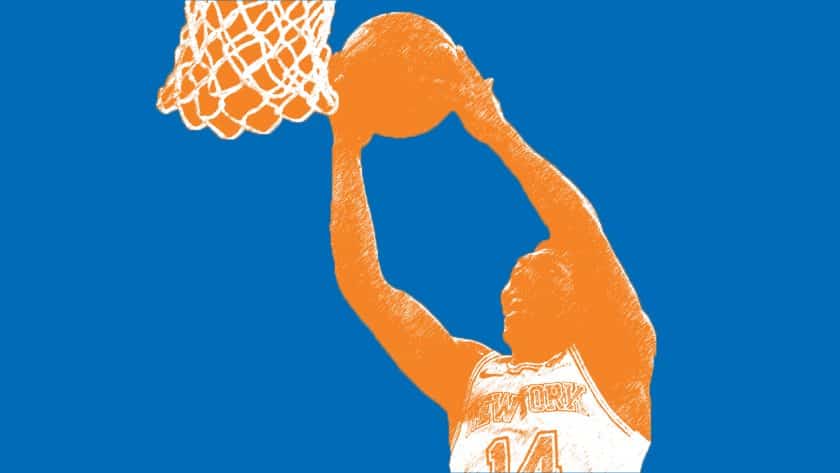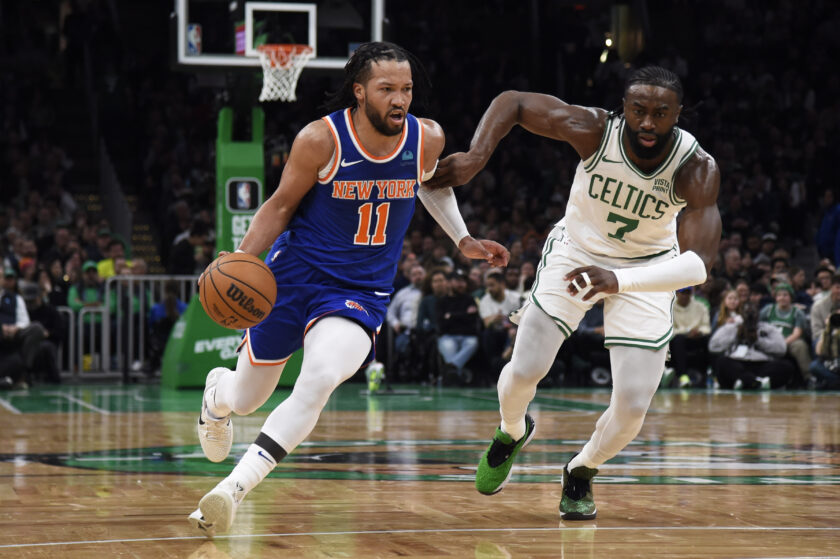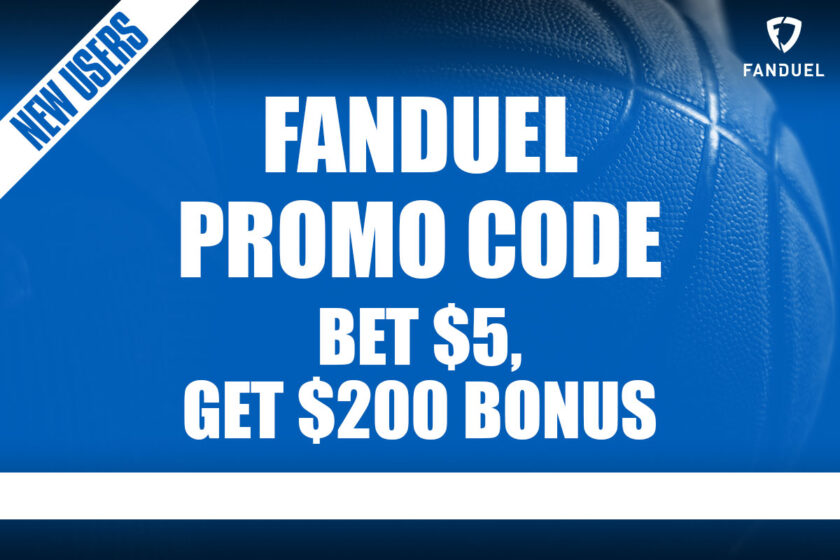Evaluating Allonzo Trier’s long-term fit with the New York Knicks

Allonzo Trier is an exciting player. A potential restricted free agent during the summer of 2020, the New York Knicks will have a tough decision to make.
[sc name=”Geoffrey Campbell Banner”]Signed as an undrafted free agent during the summer of 2018, Allonzo Trier has made the most of his opportunity with the New York Knicks. A player who sparks a buzz from the crowd, at least once or twice a game, Trier has quickly asserted himself as one of the players to watch in this young core.
Yet, in regards to his potential, the jury is undecided. Trier has plenty of offensive tools to fit the mold of an elite scorer off the bench or even a starting shooting guard in this league. Defensively, despite playing on a bad team, Trier’s individual stats actually suggest the emergence of a two-way player.
Still, as is often the case with most young players, his shot-selection and attention to detail will most likely be the determining factor in the direction of his career. Trier has often been criticized for holding the ball too long and there were reports that some of the veterans on the Knicks didn’t like playing with him.
Even though the 2019-2020 season has not started yet, Trier’s name is likely to come up as a player with immense impact for the Knicks going forward. According to Spotrac, the Knicks can extend a $4.4 million qualifying offer during the summer of 2020, making Trier a restricted free agent. Depending on offers from opposing teams, the Knicks may choose to keep Trier or trade him.
Given Trier’s current production, skill set and market, the possibilities are endless. Let’s take a deep dive into Trier’s potential market with some historical context. In the end, I’ll give my two cents on whether the Knicks should commit long-term dollars to Trier or whether his best NBA days lie with another organization.
[sc name=”Knicks Title” text=”Trier’s stats within context” ]When I first saw Iso Zo, I couldn’t help but see the Lou Williams comparisons. A walking bucket, it seems like Trier is immune to any defense, routinely breaking down coverages and getting into the paint. Being able to create your own shot is an invaluable skill in today’s game and Trier has that in spades. Last season, Trier averaged ten points per game on 44 percent shooting from the field, 39 percent from three, and 80 percent from the line. As a reserve, Trier made an impact and provided some excitement for a team that only won 17 games last season.
These numbers, which are not elite, but impressive when you consider Trier was an undrafted rookie last season, are not an aberration. During his three years at Arizona, Trier shot 47 percent from the field, 37 percent from three and 82 percent from the free-throw line.

Since 2016, there have been numerous guards, who became restricted free agents, that produced at least 44 percent shooting from the field, 39 percent from three and 80 percent from the line in a contract year. Those names include players like Evan Fournier, Allen Crabbe, Matthew Dellavedova, Tony Snell, and Malcolm Brogdon.
The cap spike of 2016 was an exercise in wild spending. Fournier, who started most of his 79 games for the Orlando Magic during the 2015-2016 season, averaged just over 15 points per game. As a result, he signed a five-year $85 million deal that is set to expire in 2021. If you consider Trier’s per 36 minutes statistics, he averages 17.1 points per game and just under five rebounds per game.
Of the remaining four players, only Crabbe, Dellavedova, and Brogdon were second-round picks. This gives you an idea of how rare a player like Trier actually is. Additionally, when you consider that Tony Snell, although a better defender, only averaged a little over eight points per game during the 2016-2017 season prior to signing a four-year $46 million contract with the Milwaukee Bucks, you start to get the idea that Trier may be in line for a big payday.
Last season, Brogdon, coming off a year where he averaged 15.6 points per game, on 50 percent shooting from the field, and 42 percent from three, agreed to a four-year $85 million sign and trade deal with the Indiana Pacers. Brogdon is also a better defender and play-maker than Trier. Plus, during last year’s playoffs, he proved to be the Bucks most reliable guard in the backcourt.
When all is said and done, my fear is that Trier may receive offers within the range of our old friend, and former Knick, Tim Hardaway Jr. Back in 2016, Steve Mills shocked the NBA when he signed Hardaway for four-years $70.9 million. With seemingly no competition from any of the other teams, the Knicks eventually regretted that contract and included it in the Kristaps Prozingis trade.
The question then becomes, should Knicks sign Trier to contract that large? Can they afford him on a cheaper deal? Or should they work out a sign and trade with another team?
In order to figure out the answer, you have really to analyze Trier’s strengths and weaknesses and whether his skill set and production can be duplicated in other ways. Trier’s offense and ability to drive to the hoop is clearly his biggest asset. However, if he can’t reel in those tunnel vision moments, then it’s possible that signing Trier to a long-term deal may do more harm than good.
[sc name=”Knicks Title” text=”Deep Dive into offense and defense” ]According to Synergy Sports stats, offensively, Trier shines in two situations, spot-ups and in isolation. Trier ranks within the 77th percentile in spot-ups and within the 80th percentile in isolation. In fact, in comparison to the rest of the league, Iso Zo ranked only behind James Harden and Spencer Dinwiddie as guards who played at least 60 games and accumulated at least 10 percent of isolation possessions during the season.
As a ball-handler, Trier ranks within the 46th percentile in pick and roll situations with .802 points per possession. This ranking is considered fairly average when compared with his peers. However, going into his second year, it will be interesting to see if Trier can access or become more of a play-maker in those situations. Currently, he looks to score, and sometimes at the expense of making the best decision during a possession.
Trier Decel BTB Gallop Hop & Finish
📍Begins buffering momentum w/R limb
📍Immediately gallops w/high dribble=time 2take in visual info while being able 2deceive
📍Foot plants from above=Optimize GRF
*Ball dip helps energy return in2 double pump @bballbreakdown @ISO_ZO pic.twitter.com/tzi3uN3QFR— BBiomechanics (@BBiomechanics) November 5, 2018
In regards to shooting, although the sample size is small, Trier ranks within the 94th percentile in catch-and-shoot attempts in the half-court and within the 99th percentile in guarded catch-and-shoot attempts in the half-court. Trier really presents with functional athleticism that translates to points on the basketball court. Again I can’t stress enough just how hard it is to guard him. And even when he has a man in front of him, he doesn’t need much room to get his shot off, and he can shoot when he’s off-balance.
Even if we look at Trier’s defense. His numbers definitely contradict outside perception. If you consider NBAstats on/off-court numbers, the net rating difference between the team’s defense with him on the court and off the court was the largest (4.2) besides Mitchell Robinson. Now its certainly possible that most of his minutes were with Robinson, but even his individual stats show that he is a serviceable defender.
Again, using Synergy Trier ranks within the 72nd percentile as an isolation defender, 70th percentile defending iso drives pull-up jumpers, and within the 91st percentile defending all jumps shots off the dribble. With the exception of defending the ball handler on a pick and roll or post-ups, there’s no category that doesn’t rate Trier’s defense as either “Average”, “Good”, “Very Good” or “Excellent”.
[sc name=”Knicks Center”]All in all, I think that after reviewing Trier’s statistical profile, I feel strongly that he projects as one of the most important Knicks on the team and a player that can have an impact for years to come.
However, I would think to change my position if more reports come about other players voicing displeasure about playing with him. On a bad team still searching for its identity, I’ll take it with a grain of salt, but chemistry is certainly important, especially on a young team.
Other teams like the Brooklyn Nets and the Boston Celtics have locked up some of their complementary players like Dinwiddie and Marcus Smart to good deals. If the Knicks can get away with signing Trier to deal worth around $40-50 million (even though I think he might get more), they should do it. If not, a sign-and-trade might be the next best option.
It may seem like hyperbole, but I really don’t see a defense that can contain Trier. And despite being a ball-stopper, to an extent, if we ever see playoff basketball with this group, Trier’s ability to create and make his own shot, when the game slows down is paramount.
Personally, I hope Trier is a Knick for a long time. But if not, I think it’s a decision that could haunt the Knicks for quite some time.
[sc name=”Twitter Follow Link” username=”@geoff_boy_ardee” ] [sc name=”Knicks Link Next” link=”https://elitesportsny.com/2019/07/03/breaking-down-the-current-new-york-knicks-depth-chart/” text=”Breaking Down The Current Knicks Depth Chart” ]




